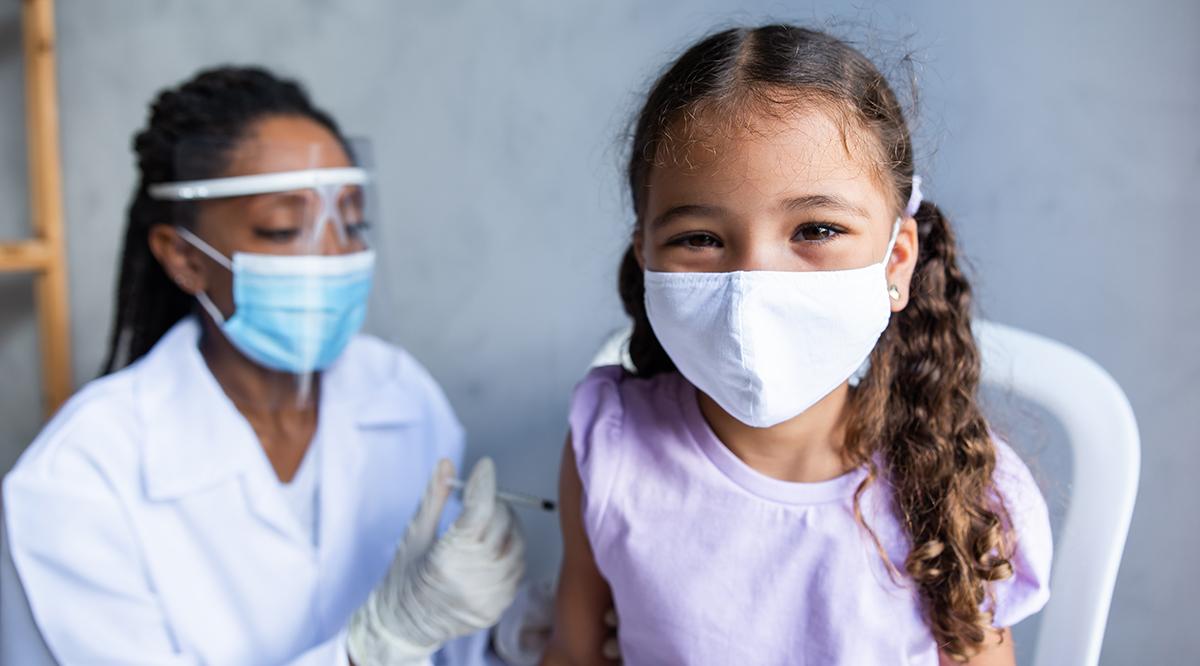In the early days of the pandemic, millions of children in the United States missed routine pediatric appointments where they would have received vaccinations against diseases such as measles, polio, and pertussis, alarming many pediatricians and public health experts.
The latest data from the Centers for Disease Control and Prevention (CDC) show that most of those children have since gotten their shots. However, the national childhood vaccination rate among kindergarteners declined by 1%, from 95% in 2019 to 94% in 2021.
“One percent may sound like nothing, but it’s not nothing … when you put it in terms of number of doses or kids,” says Kelly Whitener, JD, an associate professor at the Georgetown University McCourt School of Public Policy’s Center for Children and Families.
According to CDC data, approximately 211,000 kindergarteners did not have all required vaccines in 2021, compared with about 201,000 in 2019, even with 2021 enrollment down by 10%.
Globally, the damage has been even more serious. The World Health Organization announced in July that 25 million infants across the world missed lifesaving vaccines in 2021. While these drops are primarily due to disruptions created by the COVID-19 pandemic, public health experts worry that the trend has been exacerbated by the distrust of vaccines that gained momentum during the rollout of the COVID-19 vaccines.
If this distrust continues to grow, extending to routine vaccinations, public health experts warn that the United States could see an increase in outbreaks of diseases that Americans have not seen spread widely in decades.
“It’s becoming much more challenging for me to convince people to get their kids vaccinated,” says Jason Terk, MD, a pediatrician practicing in Keller, Texas. “We will become reacquainted with some of these diseases that we thought were relegated to history.”
Preventable diseases
Modern vaccine science dates to 1796, when Edward Jenner, now known as the father of vaccines, created the smallpox vaccine by injecting people with liquid from a sore caused by the similar, but milder, cowpox. The smallpox vaccine continued to develop over the next 150 years and a successful global vaccination campaign in the mid-1900s led to the deadly disease’s eradication in 1980. Between 1900 and 1980 alone, smallpox killed an estimated 300 million people worldwide and left many more survivors scarred.
By the late 1940s, health care providers were recommending vaccination against smallpox, diphtheria, a serious bacterial infection that killed 5%-10% of those infected, and pertussis, or “whooping cough,” which can be particularly deadly for children. In the late 1950s, the polio vaccine was added to the list of recommended vaccines, bringing relief to many parents who feared their children becoming paralyzed or dying from the very contagious pathogen. In the 1960s, vaccines for measles — which was killing 400 to 500 people in the U.S. annually and causing swelling of the brain in about 1,000 Americans each year — mumps, and rubella were added, helping to control, though not eliminate, these diseases in the United States.
Today, the CDC recommends children be vaccinated against more than a dozen preventable diseases by the age of 6. All 50 states and the District of Columbia require certain immunizations to attend school, with most of them allowing a religious or philosophical exemption.
About 2.2% of kindergarteners were granted an exemption to these requirements in 2021, and public health experts worry that misinformation and public distrust of the COVID-19 vaccines, as well as political opposition to vaccine requirements, could lead to higher exemption rates — creating fertile ground for disease outbreaks.
These will likely be seen first in communities that are ideologically similar and have lower vaccination rates, according to Terk.
“When people vote with their feet to congregate their children in communities of likeminded people with likeminded values, you have a built-in, ready-made nidus for preventable diseases,” he says.
For example, in 2019, the CDC recorded the highest number of measles cases since 1992, including a major outbreak in an Orthodox Jewish community in New York, where vaccination rates were low.
Though the United States hasn’t seen an uptick in measles cases yet, cases are rising globally because the COVID-19 pandemic has strained public health resources and delayed conventional vaccination campaigns.
In addition to pockets of vaccine hesitancy among likeminded communities, the U.S. has also seen an uptick in vaccine distrust in certain regions of the country. In Texas, for example, conscientious exemptions have increased from 0.45% of K-12 students in the 2010-2011 school year to 2.7% in the 2021-2022 school year, according to data from the Texas Department of State Health Services. For private schools, the vaccine exemption rate for the last school year was 4.23%, but some schools report even higher rates. One private school in Travis County, Texas, had 43% of its student population exempt from at least one vaccine, while nearly 50 schools recorded more than 10% of their student populations with exemptions.
Measles is so contagious that it requires a 95% immunity rate in a community to avoid an outbreak.
“As community immunity drops, the risk of these types of outbreaks increases,” Terk explains. “The immediate impact is people will get sick. … Most people who get the measles have self-limited illness, though they get quite sick. A percentage might have deadly complications down the road.”
Low vaccination rates reflect more than just ideological rejection of vaccines. The CDC’s latest data also show lower vaccination rates among children who are uninsured, Black, Hispanic, or living below the federal poverty line compared to those who are privately insured, White, or living at or above the poverty line.
“There [are] a number of factors behind those trends, and it’s not just vaccines,” Whitener says. “It’s been across access to the health care system. Successful solutions would have to have a bigger picture focus.”
Bracing for challenges ahead
Paul Offit, MD, director of the Vaccine Education Center and an attending physician in the Division of Infectious Diseases at Children’s Hospital of Philadelphia, had hoped at the beginning of the COVID-19 pandemic that it would finally put to rest the anti-vaccination movements that had falsely claimed that vaccines caused autism and brain damage.
Instead, he was dismayed to see the opposite occur.
“It invigorated them,” he says.
In many ways, he worries that there is little that scientists can do to reverse the trend of vaccine distrust.
“Academic institutions can answer scientific questions … [but] the majority aren’t [refusing vaccines] because there’s a specific scientific concern,” Offit says. “The data are there; the issue is this cultural issue” of distrusting the government and federal mandates.
Rupali Lamaye, PhD, MPH, deputy director of the International Vaccine Access Center at Johns Hopkins Bloomberg School of Public Health, also believes that there will be repercussions down the road to continued resistance to vaccines.
“I think this is going to be our future for a bit. We’re going to continue to see outbreaks,” she says. “We’ve lost too much trust over the pandemic.”
Now, the focus must be on reaching individuals through their pediatricians and community leaders whom they already trust. For example, some COVID-19 vaccination campaigns have seen success by working with pastors at African American churches and in other faith-based communities.
Whitener says it’s important to ensure that physicians are trained in how to hold culturally sensitive conversations with parents who are hesitant to vaccinate their children and that they are compensated for taking extra time for vaccine counseling.
But Terk worries that pediatricians like him may experience burnout and moral injury if they begin to see more sick children with preventable diseases when their families have refused the vaccines.
“We pediatricians are in the ‘prevention of bad things’ business,” he says. “It’s discouraging when, in good faith, we try to do that job and get resistance from families. [But] the most important thing is to continue to engage and continue to recommend [the vaccines].”

